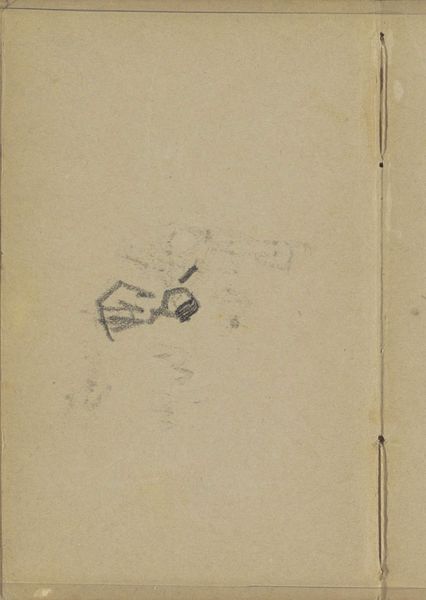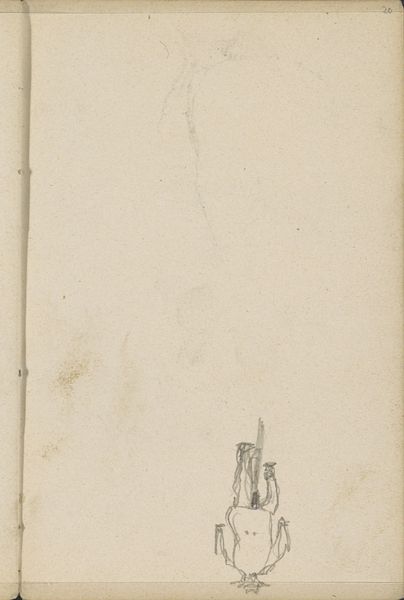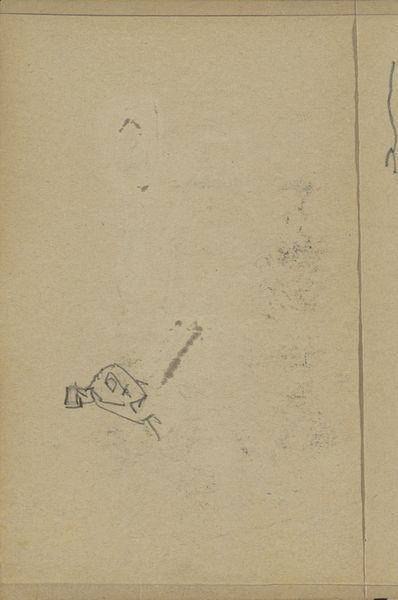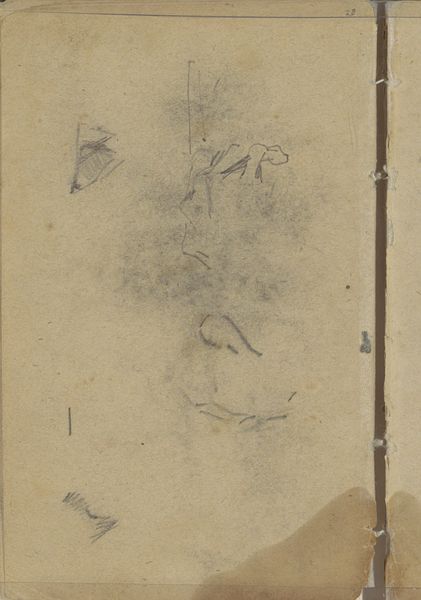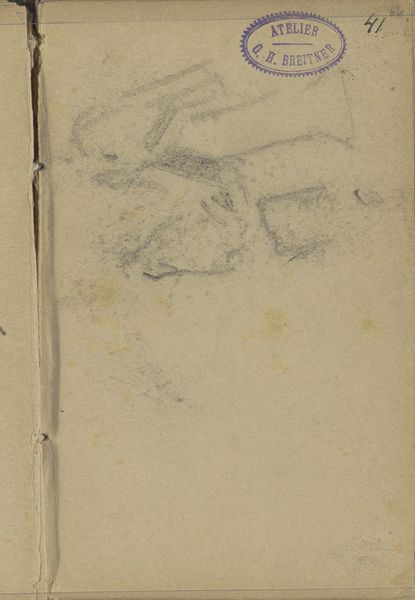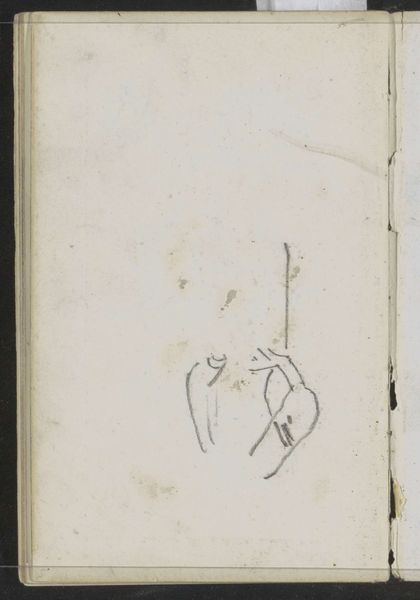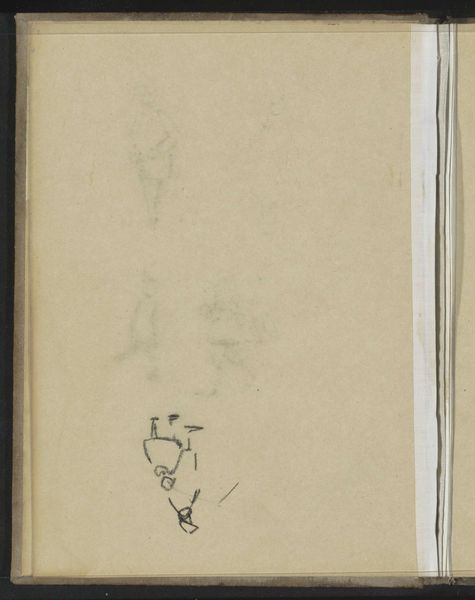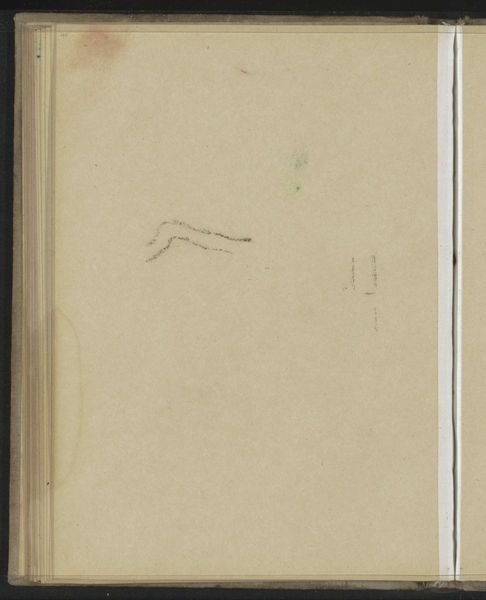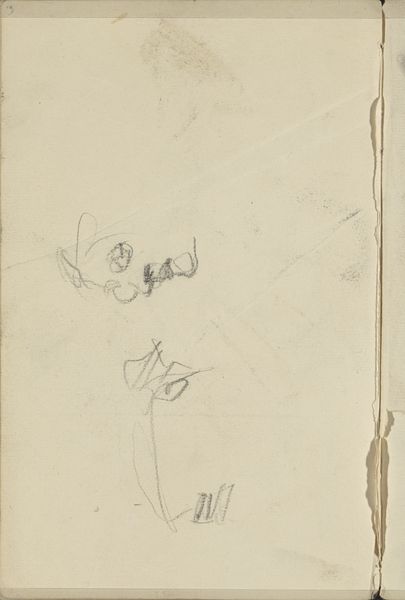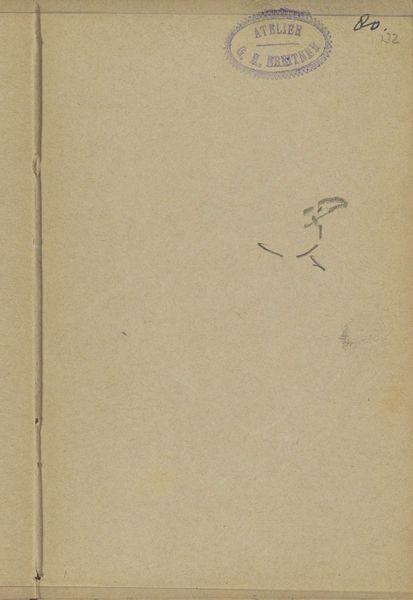
drawing, paper, pencil
#
portrait
#
drawing
#
dutch-golden-age
#
paper
#
pencil
Copyright: Rijks Museum: Open Domain
Editor: So, this is "Soldaat," a pencil drawing on paper by George Hendrik Breitner, created sometime between 1887 and 1891. At first glance, it feels almost like a forgotten sketch, just these minimal, ghostly shapes. What captures your attention in this piece? Curator: It whispers possibilities, doesn’t it? For me, it’s like catching a glimpse of a fleeting thought. The minimal lines actually amplify the weight of what's *not* there. Think about it: a soldier, yet so lightly rendered. Breitner was known for his street scenes, his capturing of Amsterdam's gritty reality. Does this feel like reality to you? Editor: Not exactly. It feels more like a… a ghost of a soldier? Almost like a memory fading away. Curator: Precisely! And consider the context. Late 19th century. The romanticized image of the military versus the actual lived experiences of soldiers, often harsh and disillusioning. Breitner might be suggesting that disparity, that what we imagine isn't always what is. I wonder, does the incompleteness bother you? Editor: I think at first it did, but now I'm finding it intriguing. The space around the sketch feels like silence, like a moment for reflection. Curator: It’s that space that lets us breathe and fill in the gaps with our own understanding, our own emotions. We’re invited to participate in the creation, to complete the story. Editor: That's a really interesting perspective. I initially saw it as unfinished, but now I see that the emptiness is actually quite powerful. Curator: It’s a testament to the power of suggestion, isn't it? A few lines can evoke so much. Editor: Definitely changed how I see sketches. It’s not just a preliminary step; it can be the finished thought.
Comments
No comments
Be the first to comment and join the conversation on the ultimate creative platform.
